10 best honeysuckles – for fragrance and flowers even in winter
Our pick of the best honeysuckle varieties for summer flowers, winter fragrance and even hedges
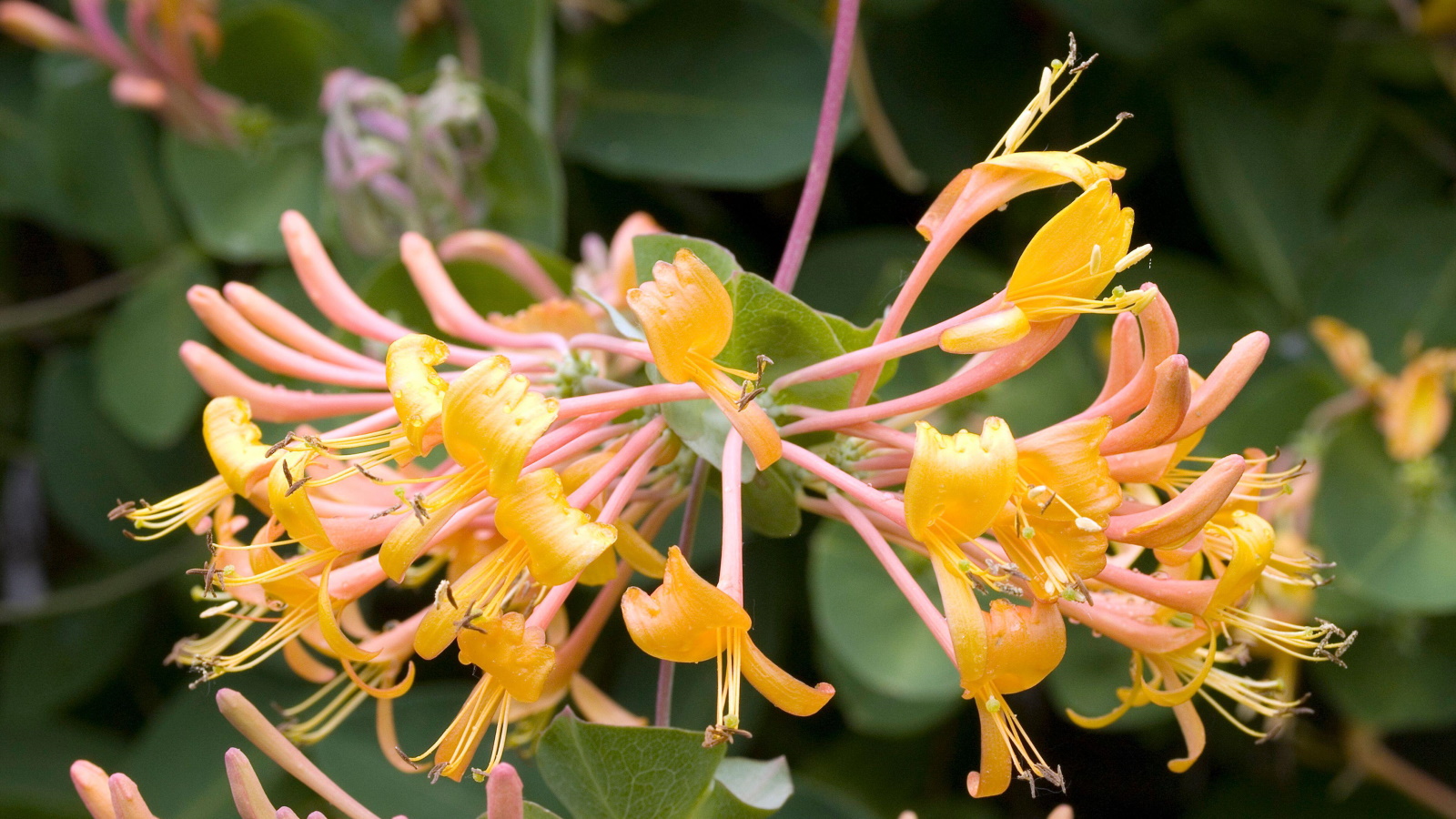

We all know the voluptuous summer fragrance of the twining honeysuckle. It’s such a familiar feature of our hedgerows and yards. If you already know how to grow honeysuckle, you'll be rewarded with indispensable color, sumptuous scent, and undemanding growth.
Climbing honeysuckle bring us billowing color, intoxicating evening fragrance and valuable nesting sites for birds. But there are three other, very different kinds of honeysuckles, shrubs rather than climbers, that really don’t look much like honeysuckles at all.
These honeysuckles are all shrubs rather than climbers, and they fall into three groups. There are the deciduous, winter flowering honeysuckles, with their creamy flowers opening on the bare branches. There are the very different evergreen shrubby honeysuckles, often used for hedging or ground cover. And there are also honeysuckles grown for their edible berries, known as honeyberries (Lonicera caerulea). In recent years there have been developments in this group and improved varieties are becoming available.
All honeysuckles are easy to grow, and most will grow in a number of different situations. Shrubby evergreen types are good in shade, and make fine low hedges or small scale features and topiaries. While deciduous, winter flowering varieties bring us color and fragrance when we, and early flying bees, need it most.
10 best honeysuckle varieties
A stunning variety of climbers and bushy honeysuckle shrubs, these are our top ten picks for your yard.
Lonicera x heckrotii ‘Gold Flame’
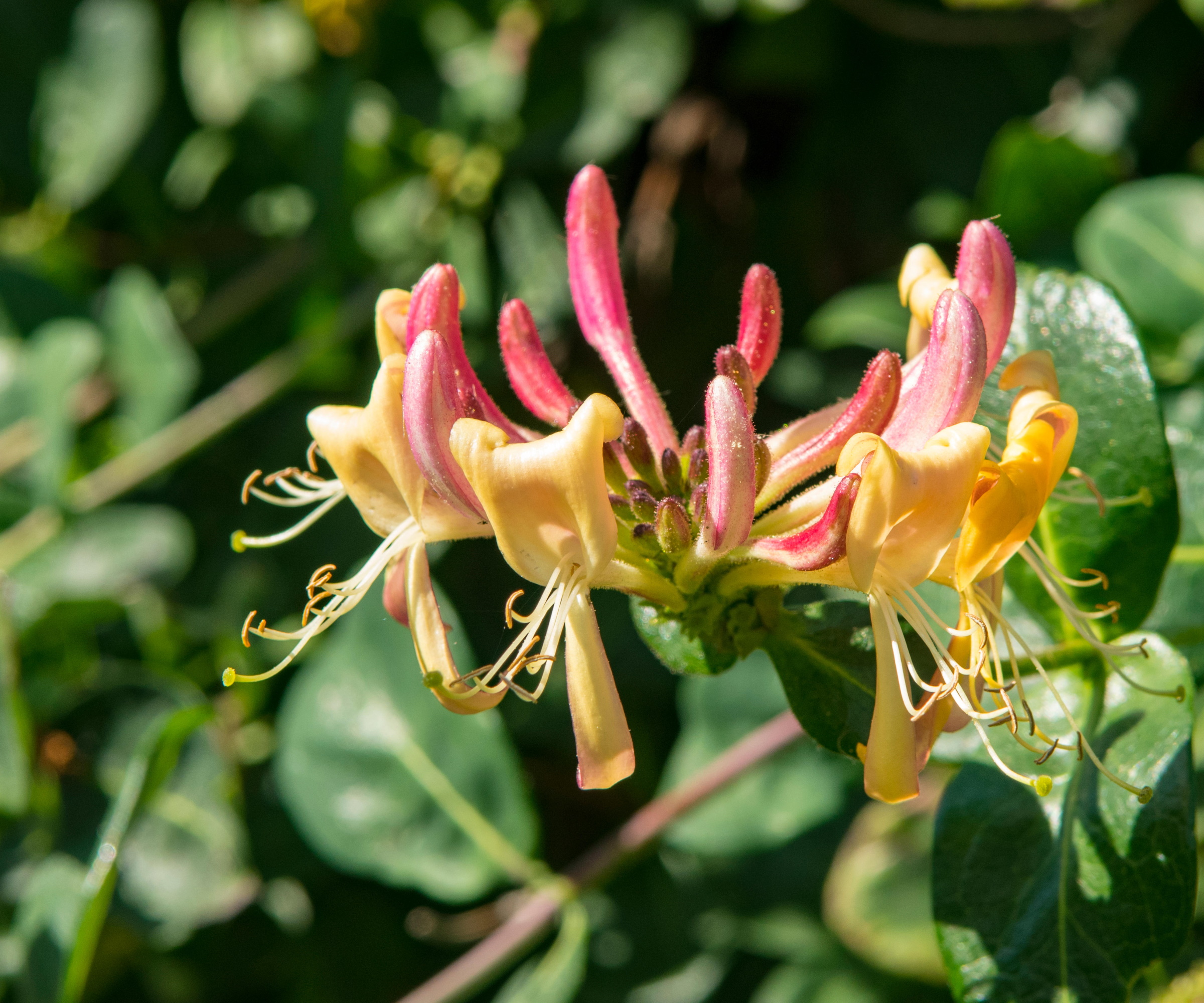
Partially evergreen, with blue-tinted foliage and fragrant, pink buds opening to bright orange-yellow flowers from July to September. Shrubs are available to buy from Nature Hills.
Good for An obelisk, or house wall.
Design expertise in your inbox – from inspiring decorating ideas and beautiful celebrity homes to practical gardening advice and shopping round-ups.
Hardiness zone 4-9
Height 3-5m (10-15ft)
Also try Shade-loving Lonicera x tellmanniana
Lonicera japonica ‘Aureoreticulata’
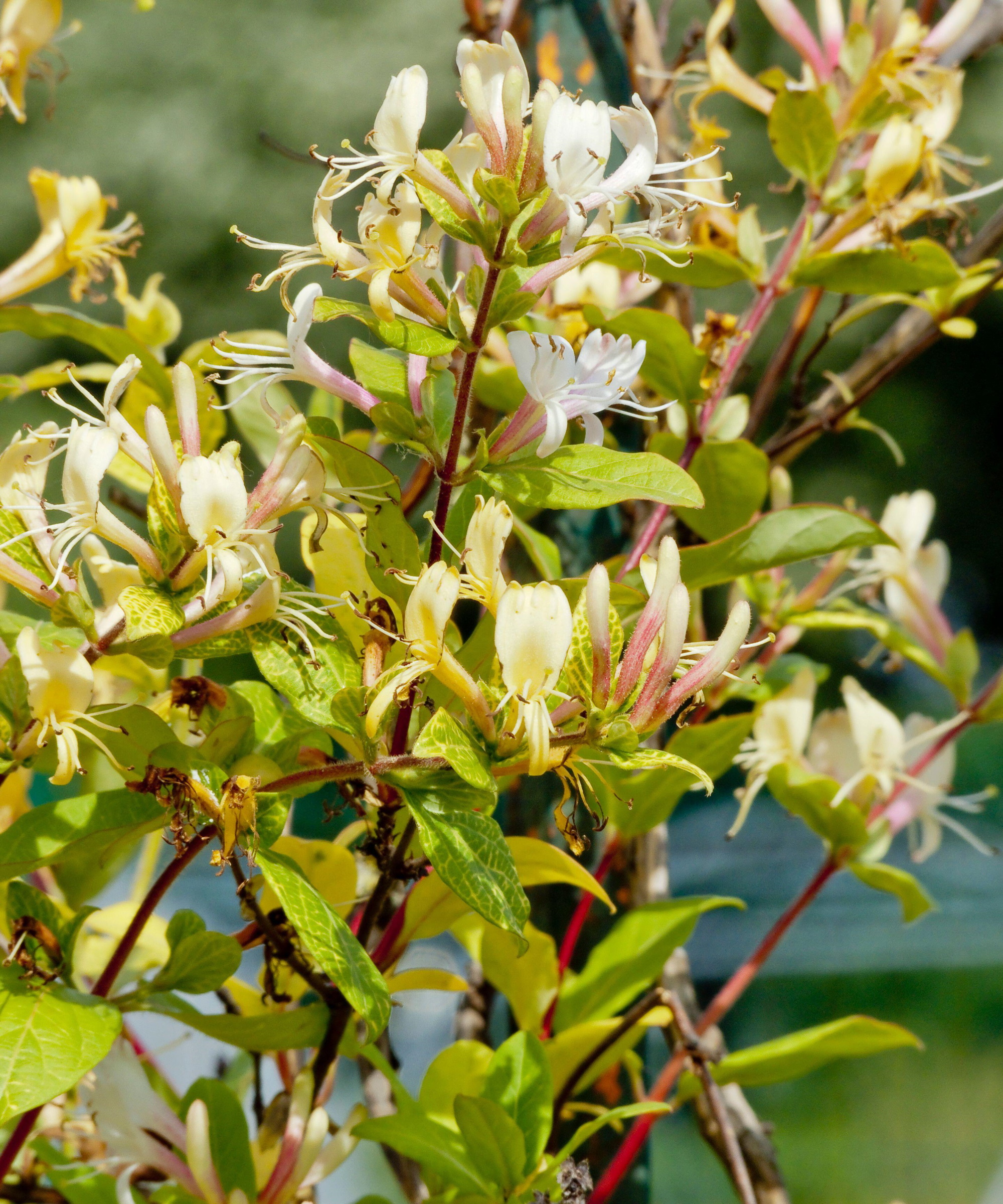
Vigorous, often evergreen, the oval leaves are netted in golden veins and with fragrant flowers opening white then maturing to yellow from June until fall.
Good for Hiding untidy features, filling difficult corners.
Hardiness zone 4-9
Height 3-6m (10-20ft)
Also Tolerates very hard pruning, but may be invasive in some areas.
Lonicera ‘Mandarin’
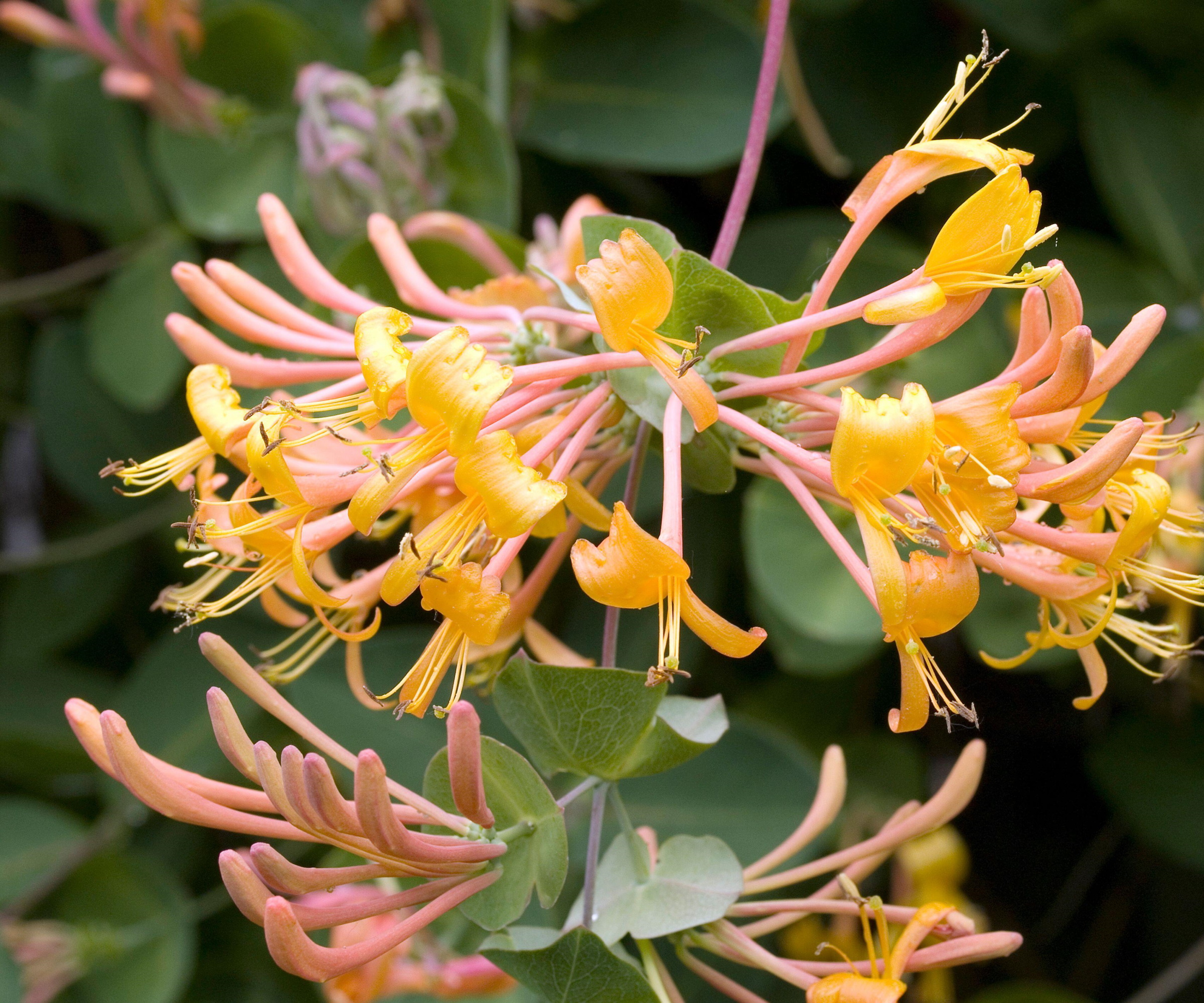
Coppery young leaves mature to rich, glossy green, setting off the prolific reddish orange buds. These open to bright orange in June and on into September.
Good for Covering walls and fences
Hardiness zone 4-9
Height 4-6m (14-20ft)
Also try The evergreen Lonicera sempervirens, which can be bought here at Nature Hills.
Lonicera periclymenum ‘Graham Thomas’
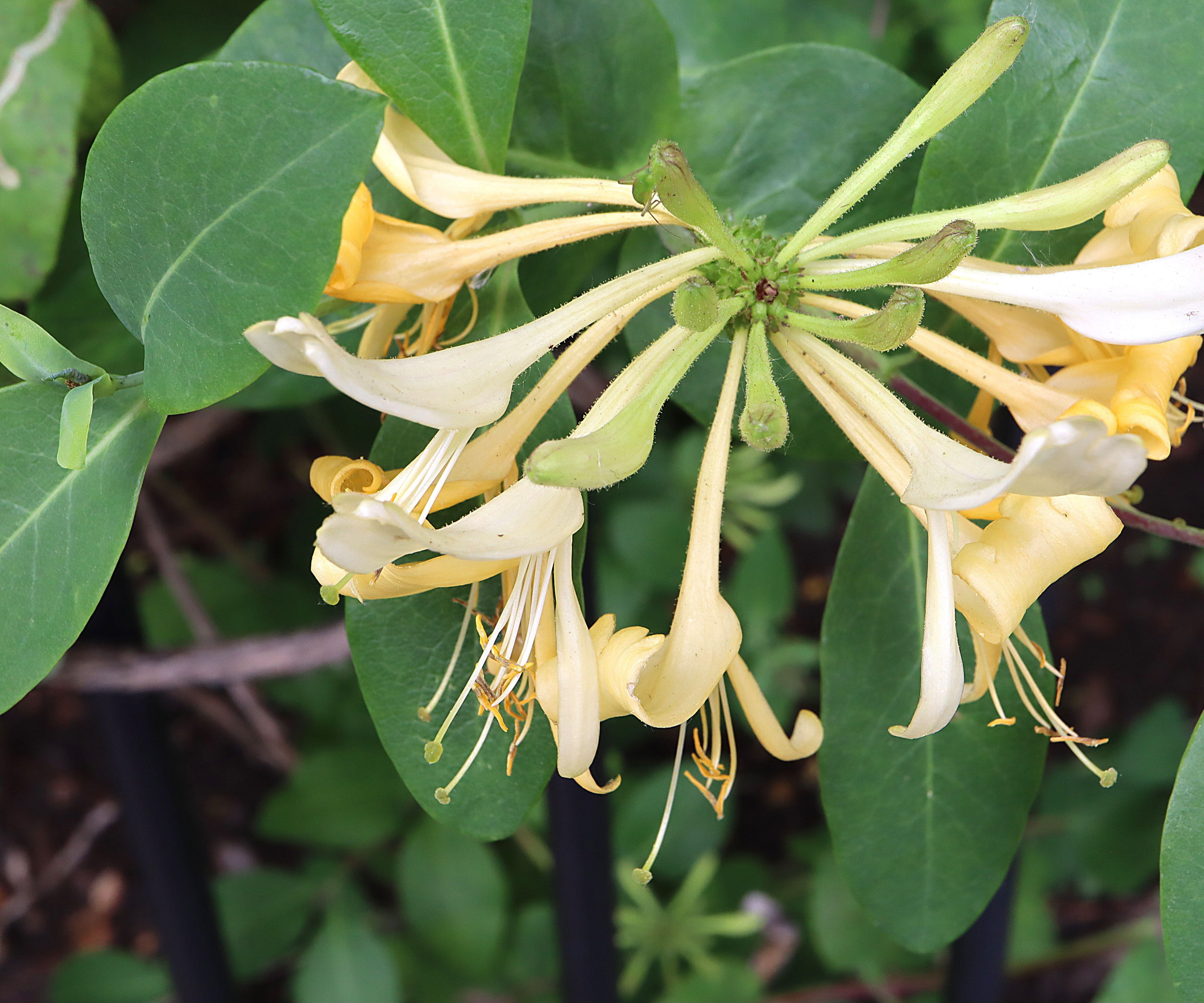
Strong growing and well-scented, the creamy buds open to white with no hints purple coloring. Prolific and impressive.
Good for Pergolas, fences and house walls, guiding into mature shrubs
Hardiness zone 4-9
Height 3-6m (10-20ft)
Also try The exceptionally well-scented ‘Scentsation’, available here at Nature Hills.
Lonicera periclymenum ‘Serotina’

The classic late Dutch honeysuckle has richly scented flowers, which are reddish-purple on the outside, and cream then white within, followed by small, red berries.
Good for Walls, fences, pergolas, informal and wild hedges
Hardiness zone 4-9
Height 5-7m (15-23ft)
Also Can be kept smaller by pruning
Lonicera similis var. delavayi

This late flowering, disease-resistant, evergreen honeysuckle is unusual in having white undersides to its leaves. The white flowers, with the heavy evening perfume, mature to yellow over many weeks.
Good for Walls, fences, pergolas
Hardiness zone 4-9
Height 3-4m (10-14ft)
Also The long-stalked flowers are especially well displayed.
Lonicera caerulea
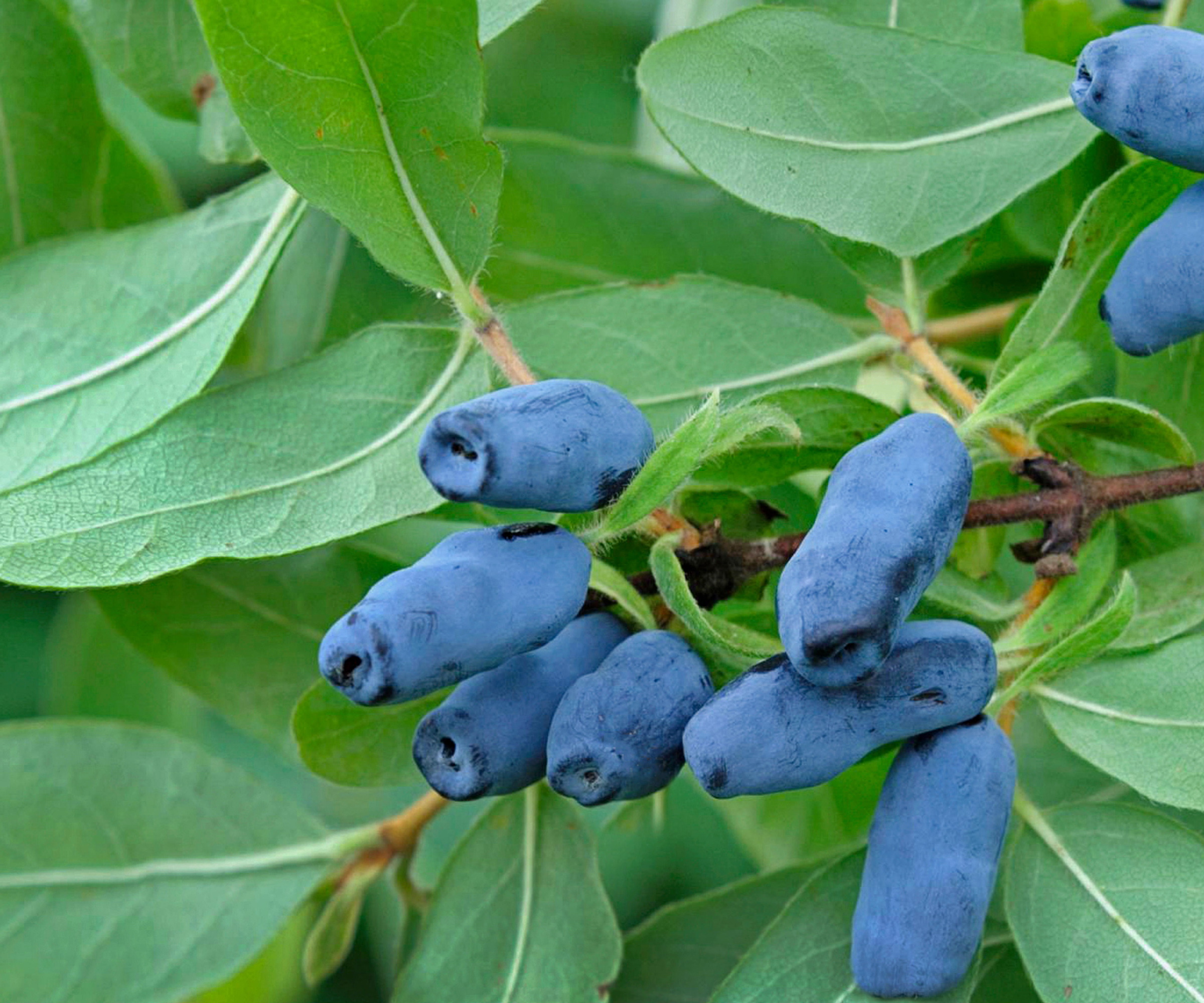
Known as honeyberry, this deciduous winter-flowering honeysuckle is increasingly grown for its large, almost rectangular, edible blue fruits that are rich in vitamin C.
Good for Cooking, vitamins
Hardiness zone 2-7
Height 1-2m (4-6ft)
Also Healthy, adaptable and exceptionally cold tolerant
Lonicera ligustrina ‘Baggesen's Gold’
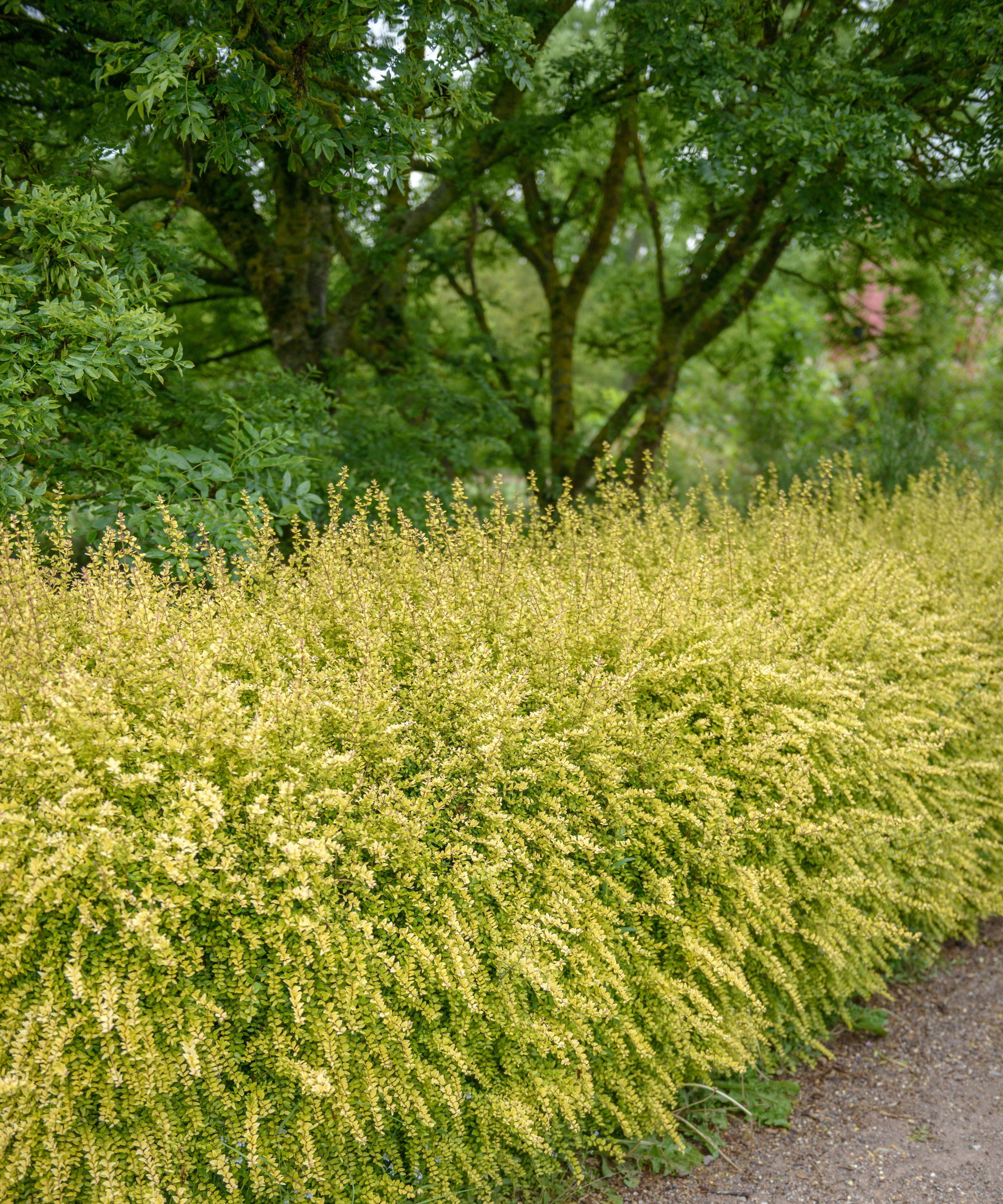
This small, densely growing, evergreen combines quick growth, with tolerance of regular clipping. The small neat leaves are yellow in summer.
Good for Low hedges, small specimens
Hardiness zone 4-9
Height 90cm-1.2m (3-4ft)
Also try ‘Lemon Beauty’, with cream-edged, dark green leaves
Lonicera ligustrina var. pileata
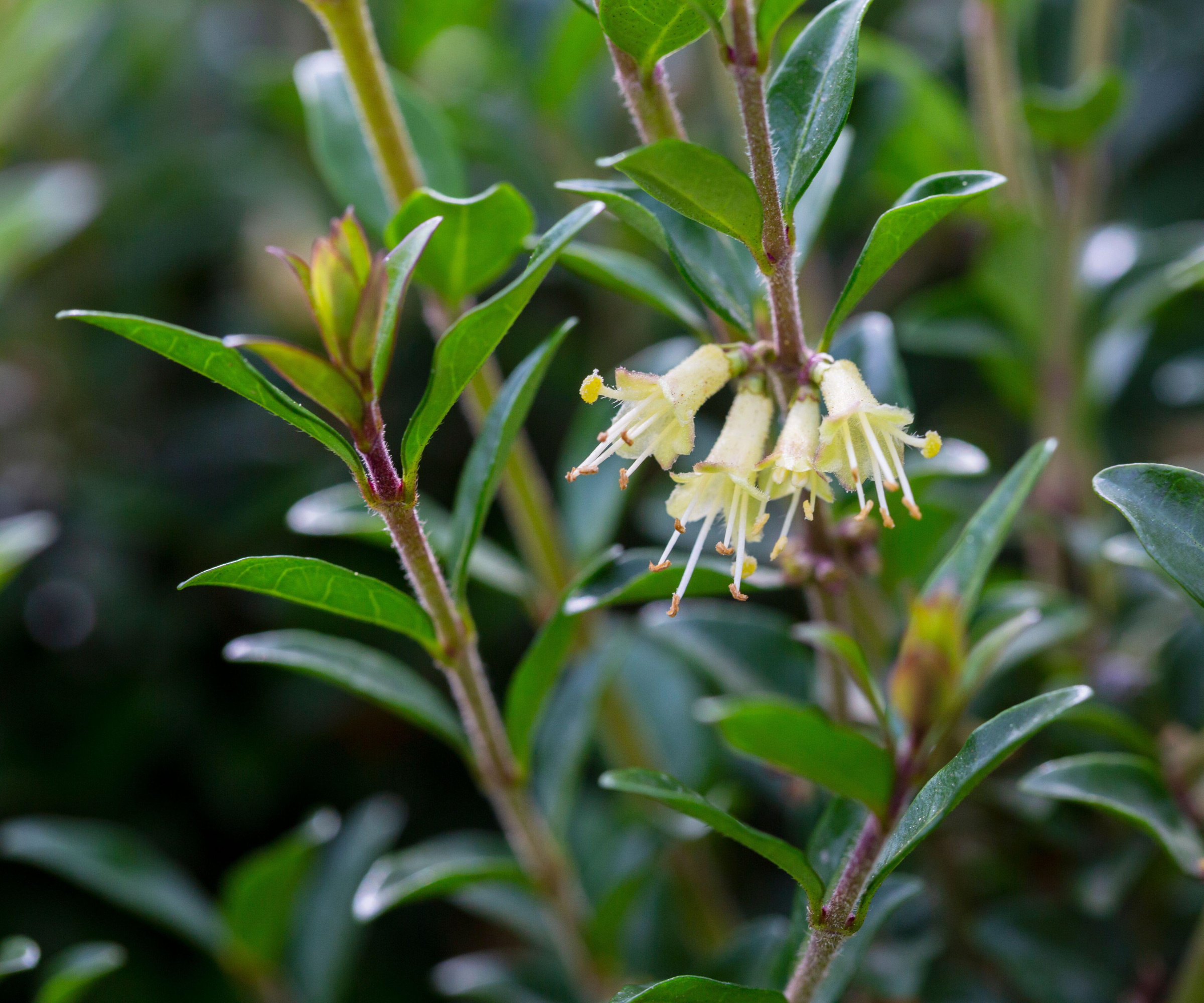
Known as box-leaved honeysuckle, this neat evergreen has distinctive, horizontal branches packed with short, dark leaves and occasionally also offers unusual, translucent blue berries.
Good for Ground cover, an alternative to box
Hardiness zone 4-8
Height 60cm-1.2m (2ft-4ft)
Also try ‘Elegant’, with arching branches
Lonicera × purpusii 'Winter Beauty'
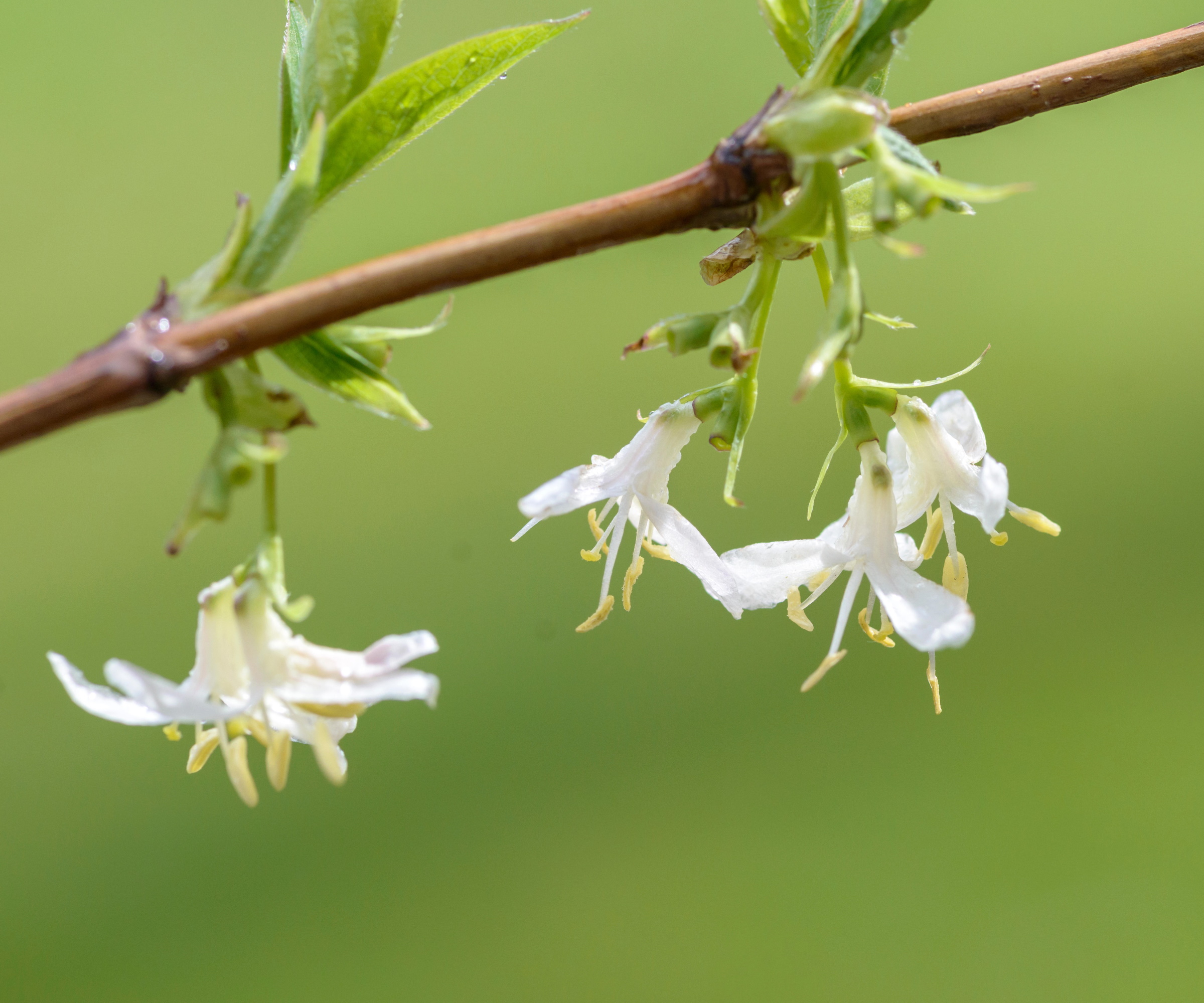
A strong growing, rather twiggy, deciduous shrub carrying up to four, white, very well scented flowers in clusters along the bare January and February shoots.
Good for Winter flowering and fragrance
Hardiness zone 4-8
Height 1.8-3m (6-10ft)
Also try Lonicera fragrantissima, with red spring berries
Do honeysuckle vines need pruning?
Not necessarily; there are two approaches to honeysuckle pruning. In large yards and wilder settings, honeysuckle vines can simply be left to ramble and their vigorous twining shoots will cling to mature shrubs. However, to keep the plants to a manageable size, they can be pruned.
The many varieties of Lonicera periclymenum are pruned by choosing one or two of the oldest branches and cutting them out low down on the plant. Removal of the pruned stems will require some careful untwining of the growth that has been cut.
Late flowering varieties, such as Lonicera similis var. delavayi, can be pruned by cutting back in spring or by simply tidying the plant after flowering.
All vining honeysuckles can be rejuvenated by cutting back very hard in spring and thinning out mass of resulting growth.
FAQs
Are honeysuckles good for wildlife?
Yes, honeysuckles and especially the many forms Lonicera periclymenum, are good for wildlife for a number of reasons.
The flowers attract pollinators including moths and especially the large, night flying hawk moths. Those with smaller flowers attract bees and other insects. The berries that follow later in the season are eaten by many fruit-eating birds and the tangled growth also provides sheltered nest sites. Before spring or summer pruning, be sure to check that there are no nests with eggs or fledglings.
Towards the base of older branches of climbing varieties, the bark naturally peels off into thin strips and some birds pull it away to use as nest building material.
Climbing honeysuckles are best given free rein over pergolas, mature hedges, sheds or trees, as they cling by twining their shoots round the branches of their hosts. All climbing varieties of honeysuckle fair best in well-drained, fertile soil with shade at the roots.
Winter flowering types enjoy good soil and full sun, and hedging varieties of honeysuckle need regular clipping. All can be rejuvenated by pruning hard in early spring.

Graham Rice is a garden writer who has won awards for his work online, and in books and magazines, on both sides of the Atlantic. He is a member of a number of Royal Horticultural Society committees and the recipient of the 2021 Garden Media Guild Lifetime Achievement Award. He gardened in Pennsylvania for 20 years, but has recently returned to his native England.